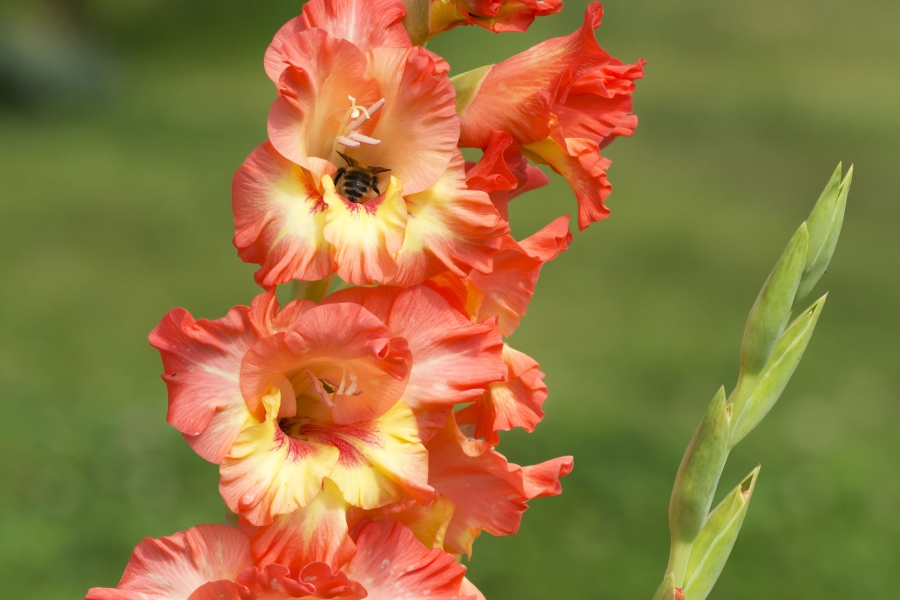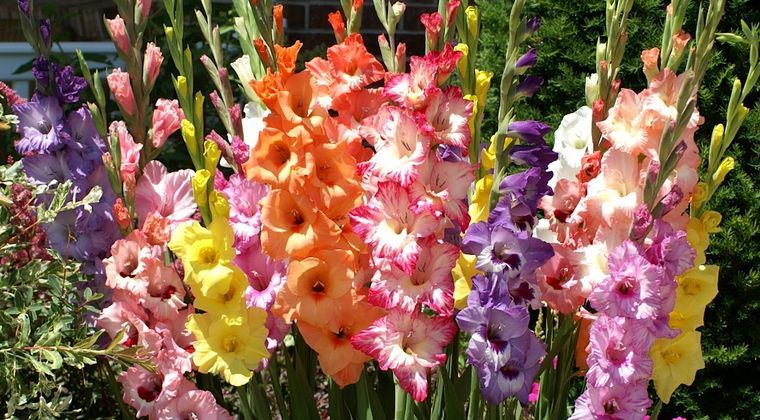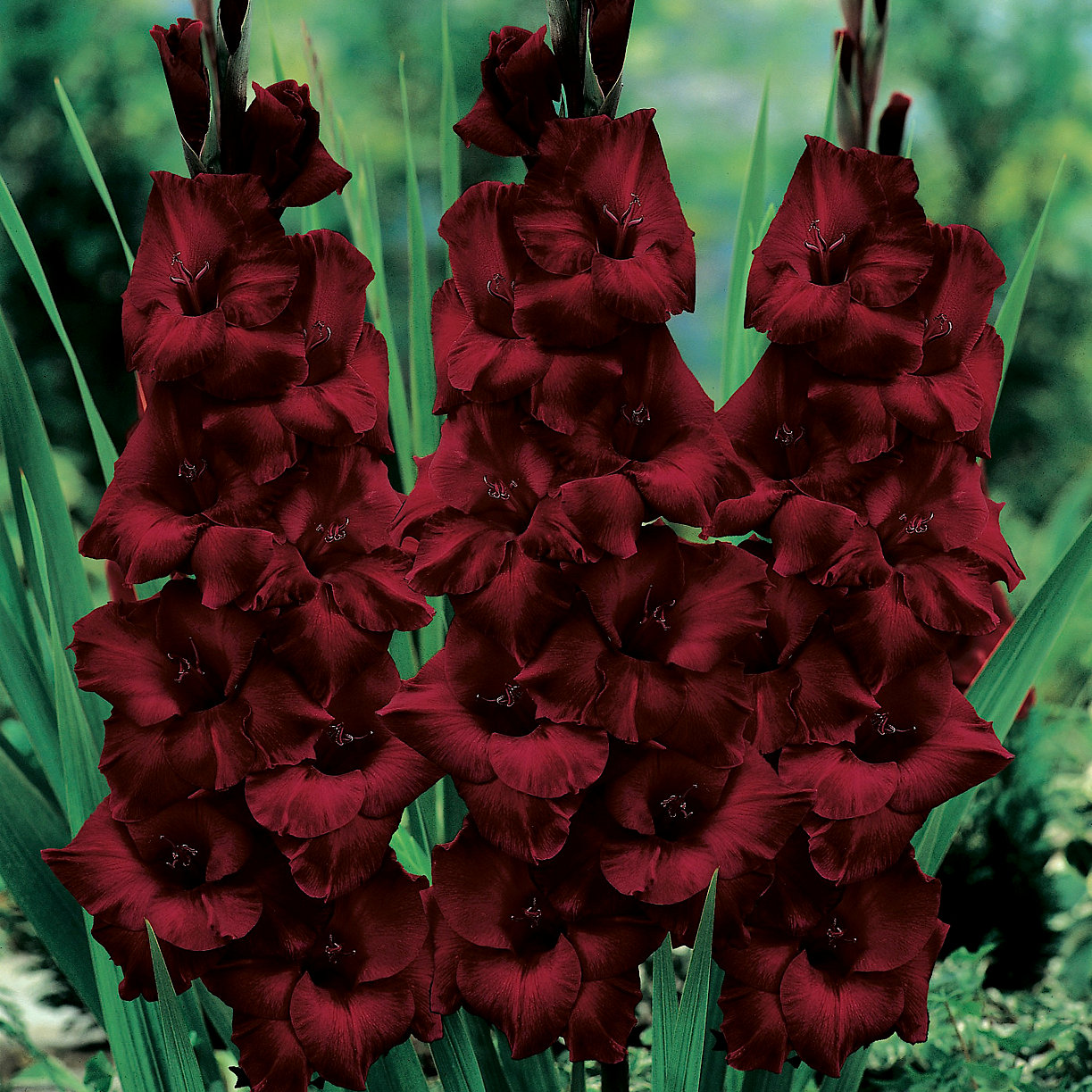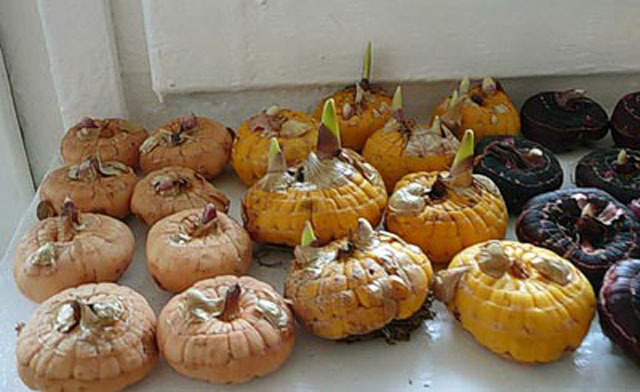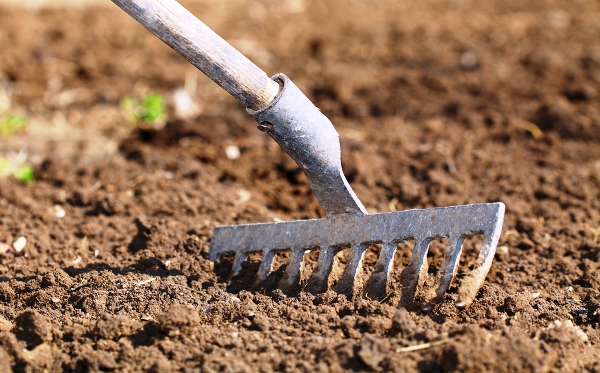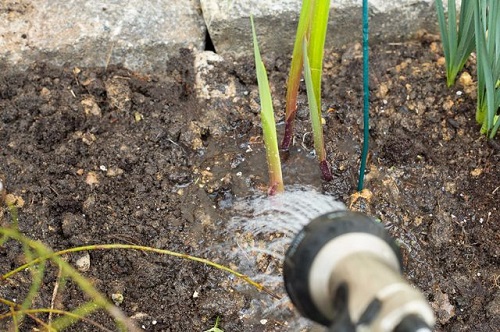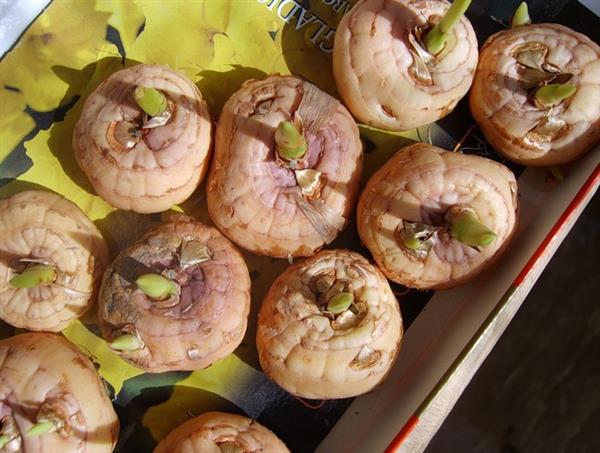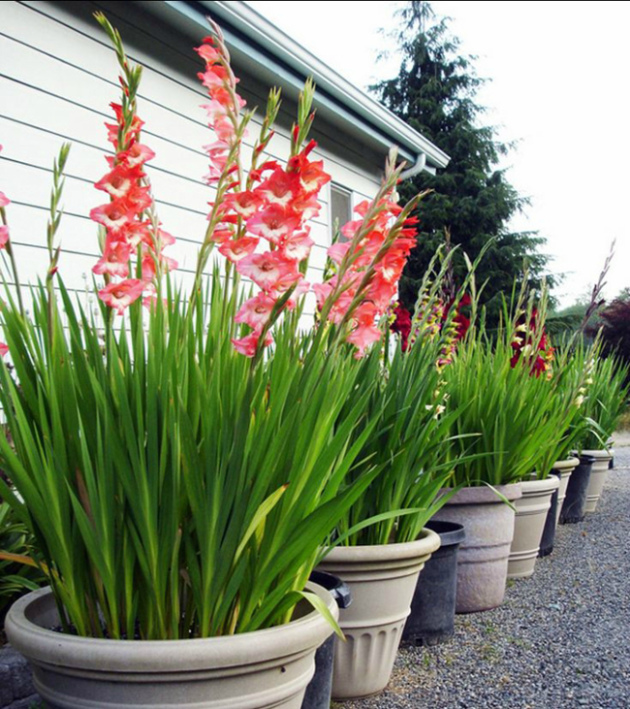Content:
Greatness and luxury are the best characteristics of a flowering plant. A summer resident who starts cultivating a flower wants to know everything about gladioli, which is reasonable. The plant has features, the knowledge of which will help to grow a wonderful decorative and healthy plant.
What a flower - gladiolus
What is gladiolus? Gladiolus (Latin for "sword") is a perennial bulbous plant of the Iris family. The leaves, pointed at the ends, growing from the rhizome, have an average height of 40 to 80 cm. The straight, dense stem reaches one and a half meters in height, forming a spike-shaped inflorescence of 10 or more flowers. Funnel-shaped bisexual flowers, the size of which depends on the variety (3.5-15 cm), consist of 6 curved petals fused at the base. The color of the corollas is varied: from boiling white to deep burgundy or dark purple almost black.
The flower comes from Asia, Africa. Wild varieties are still found in Southern Europe, Western Siberia, and the Caucasus. It appeared on the European continent in Ancient Rome, where they made male amulets from it, used it for food. It gained popularity as an ornamental plant in the 18th century. In a relatively short period of time, breeders have bred about 200 species and about 5 thousand varieties.
Plant characteristic
The basis of the flower is the corm. After planting, it releases roots, buds. Root system changes occur throughout the season. The mother bulb forms primary and retractor roots, the base of one of the buds transforms into a replacement corm, which creates offspring - tiny daughter bulbs.
The structure of the inflorescence is also interesting. Flowers can be arranged in 1 or 2 rows, on one side of the stem, or on two, in a spiral. By how often the flower funnels are located, the inflorescences are divided into:
- friable with a large distance between the buds;
- medium-dense - when the petals of adjacent funnels barely touch;
- dense, when the blossoming corollas overlap each other.
Gladioli flowers are also subdivided according to the structure of the corolla, the size of the inflorescences, the timing of flowering, and the height.
Also, modern gardening knows flowers similar to gladioli:
- Crocosmia (montbrecia, tritonia, Japanese gladiolus, Chinese gladiolus) from the Iris family, native to Africa. It is a bulbous plant that forms panicle inflorescences with small flowers, stars or bells.
- Acidantera (gladiolus Murel, fragrant gladiolus, Ethiopian gladiolus) is "African" in origin. These are stellate flowers with uniform petals, which are collected in a spike-shaped inflorescence, very odorous.
Some gardeners see similarities with gladioli in delphiniums, irises, lilies, orchids.
Types and varieties
Conventionally, all cultivated gladioli are divided into 3 large groups:
Wild gladioli
In floriculture they use:
- Marsh gladiolus up to 60 cm high with small dark purple flowers. Loves wet places. Tubers hibernate without digging under cover.
- Gladiolus Byzantine (G. Bizantinus, G. Elatus, G. Grandiflorua) is a frost-resistant type. The flowers are small, purple with a transition to crimson with a white vein.
- Gladiolus Kochi blooms in spring. The inflorescence is short, lilac-pink.
- Gladiolus ordinary reaches up to 1 m in height. Purple-violet flowers are medium-sized, densely planted. It is thermophilic, therefore it is grown outdoors in the southern regions.
- Gladiolus seed. Its height is up to 80 cm. The typical color of the petals is light lilac or pink, other colors are less common.
- Gladiolus tiled is a frost-resistant species, the flowers of which are painted in pinkish-lilac tones.
Cultural gladioli
There are 6 hybrid species:
- Colville's Gladiolus is an early flowering type with small flowers on a 90 cm stem. The typical color of the petals is white, pink, and crimson.
- Gladiolus Harlem. Its flowers on a fragile stem open in early summer. The color is varied.
- Gladiolus dwarf is a Dutch hybrid (nanus, mini gladiolus), barely reaching 40 cm in height. Coloring of light tones with dark specks-rhombuses in the core.
- Gladiolus Tubergen of Dutch selection is distinguished by narrow leaves, about 75 cm high and a wide variety of corolla colors.
- Gladiolus primrose, rarely used as an ornamental.
- Hybrid gladioli are almost all varieties found in horticulture. Their height is from 90 to 200 cm, the size of flowers is from 5 to 20 cm, the number of inflorescences can reach 20 pcs.
The most popular varieties of hybrid gladioli are divided into color groups:
- Red gladioli: Traderhorn, Shaka Zulu, Halisi, Oscar, Bimbo, Great temptation, Stereo, Zizani, Baccarat, Black Sea, Espresso, Mystery of the night, Red Square, Africa, Black surprise.
- Burgundy: Black Velvet, Arabian Nights.
- Pink: Priscilla, Katerina, Malika, Fidelio, Dandy, Dew in an emerald, Rose Supreme, Pink Lady, Countess, Orlando, Prague, Mon Amour, Gagarin's Smile.
- White gladioli: White Prosperity, Fiorentina, Bangladesh, Sea Queen, White Vertical, Snowy Frizl, Dmitry Solunsky, Tampere.
- Crimson: Plumtart, Joe-Joe, Royal Spier, Crimson streamer.
- Greens: Green Star, Fergie, Radiant Greens.
- Salmon, orange: Grand Duchess Elizabeth, Lace bow, Golden wedding, Maya Plisetskaya.
- Yellow gladioli: Jester, Nova Lux, Lyim Light, Vladimir, Izuminka, Victoria, Yellow.
- Lilac and purple: Passos, Volbit, Dynamite, Valencia, City of Kitezh, Anuk, Violetta, Chemistri, Grand Pass, Sadko, Tango.
- Brown, smoky: Chocolate girl, Charming berry, Yakutsk, Chocolate, Bukkako, Torino.
- Blue: Blue Blizzard, Blue Butterfly, Sweet Blue.
- Blue: Gates of Heaven, Blue Pool, Starry Knight, Magdalena.
- Black Gladiolus: Ebony Beauty.
Features of planting and care
The cultivation of a skewer involves several stages, starting from the preparation of tubers and ending with laying for storage, which is done every year, akin to annual plants.
Preparing gladioli for planting
Preparation is a long process that begins 3 weeks before the planting date. Tubers are taken out of storage, examined, healthy ones are separated from those that have been damaged or dried out over the winter. In order to avoid mistakes during sorting, the planting material is peeled from the husk.
Then the corms are disinfected, again laid out on a pallet with a damp substrate of cotton wool or moss. So they keep them for 3 days, preventing the wet layer from drying out.
Bulbs purchased from reputable sellers in person or with delivery by mail go through all stages of preparation.
Disembarkation dates
Fitting factors:
- stable soil warming up to 10 ° С at a depth of 10-12 cm;
- the soil is dry enough after the snow melts.
The approximate dates of planting are in April - the first ten days of May.
Landing place
For gladioli, they choose sunny areas where rainwater does not stagnate. An additional important condition is protection from wind, the gusts of which can break long peduncles.
Ideal if the landing site was prepared in the fall. In spring, this can be done 2 weeks before planting the bulbs. Digging, loosening, fertilizing bulbous plants - this is enough for a regal flower.
Planting depth
Depending on the size of the corms, they are planted to a depth:
- large - 10 cm;
- medium - 7 cm;
- small - up to 3 cm.
Watering
Before the appearance of peduncles, the timing and amount of watering is determined by the state of the soil, since spring and the first half of summer are often accompanied by precipitation. Three or four fully formed skewer leaves mean that the peduncle has already been laid, so the watering is increased to 15 liters per 1 m². Flowering plants require even more moisture, while after irrigation they loosen the soil and scoop it up to the base of the stem.
Top dressing
The first feeding is carried out a month after planting the tubers. At this stage, add ammonium nitrate or urea at the rate of 30 g 1 m². The second time is fed during the formation of buds. It is optimal to use a complex fertilizer for flowering or specialized.
Garter
Peduncles of medium and tall varieties are tied to pegs when they are equal in height to the leaves. If, for some reason, it is difficult to install supports, the flowers are spud to a height of at least 12 cm.
Storage preparation
The buds that have faded are cut from the stem. Leaves are left so as not to deprive the corm of nutrition.
Planting material is stored in a dark cool place, packed in paper bags, ventilated every 10-15 days.
Diseases and pests
The main pests of gladioli are slugs and bears that eat up stems and bulbs. Only specialized drugs that are introduced into the soil, for example, medvetox, are saved from the bear.
All diseases characteristic of the skewer - fungal, bacterial, viral, unfortunately, appear very late, when irreversible processes are already taking place in the bulbs, why it is pointless to fight them. The only measure of protection is strict adherence to the rules of agricultural technology, proper care, disinfection of the planting material, and tillage before planting.
Gladiolus in landscape design
In terms of design, gladioli in the garden are rather uncomfortable. In a single fit they lose their royal grandeur, in a group they resemble a gypsy skirt. The most traditional company in the garden for him is multicolored phlox, decorating the seemingly bare stems of gladiolus.
A common solution is small, compact gladularia (the so-called flower beds from some gladioli), placed in large pots or islands in flower beds, carefully selected in color and height.A beautiful frame will be relatively low flowers "waist-deep" to a group of gladioli, blooming before or after it.
When planting in groups, no more than 15 skewers of different, but harmonious colors are planted nearby. When decorating dwarf or medium-sized borders, it is recommended to use small groups, emphasizing their beauty with ground cover and undersized flowering or decorative leafy neighbors.
How to keep a bouquet of gladioli fresh
Quite often, summer residents grow a skewer for cutting. This is understandable, since it is difficult to imagine a more solemn bouquet. To make fresh flowers stand longer, use simple techniques:
- Activated carbon, aspirin, sugar, salt, citric acid are added to the vase.
- Scratching the stems to increase the moisture-absorbing surface.
- Change the water regularly.
- Remove wilted flowers.
The popularity of gladioli knows no bounds. His name is even assigned to the characters of popular computer games (Gladiolus Amicitia). A huge selection of hybrid varieties with a wide variety of colors, from delicate monochromatic to spectacular multi-color, the multivariance of flower arrangements pays for some of the difficulties of growing.
